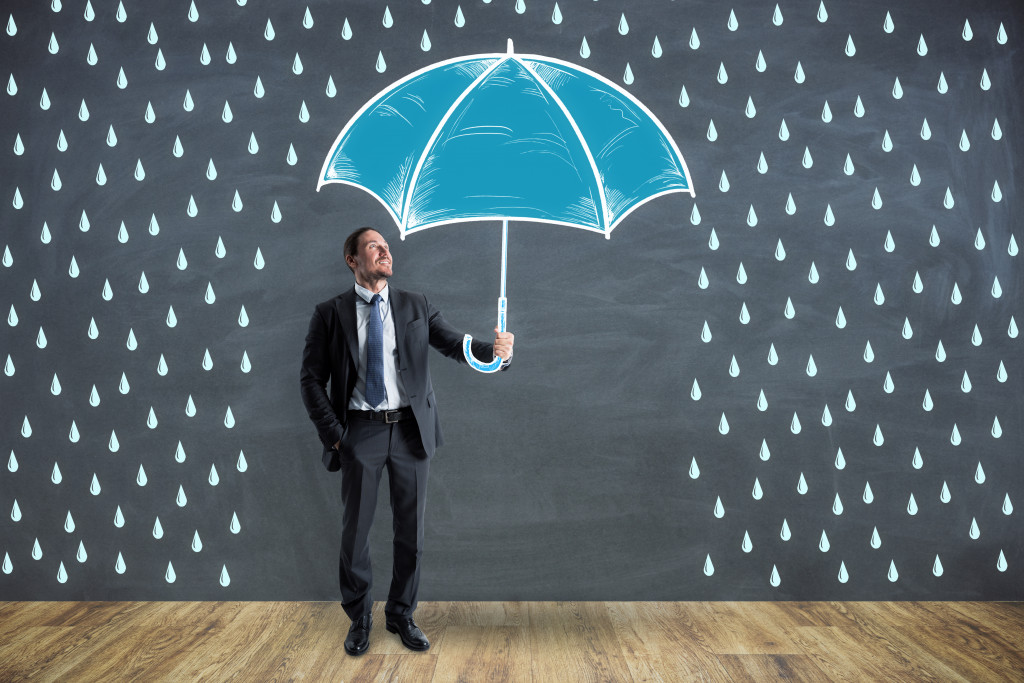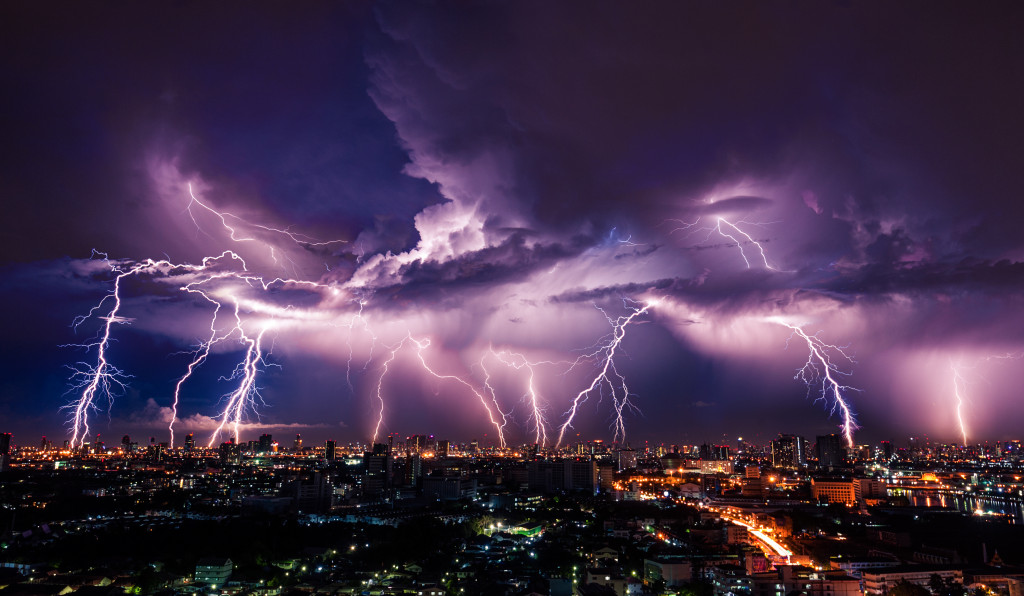- Identify potential storm-related risks and create a disaster preparedness plan.
- Prioritize employee safety with clear instructions, an evacuation plan, and reliable communication systems.
- Protect data and finances by backing up documents, using encryption technology, and reinforcing cyber security protocols.
- Provide resources and training for employees to prepare for storms properly.
- Invest in business insurance to cover property damage, lost income, and dewatering services.
Storms can be extremely damaging to business establishments. Not only can severe storms directly cause physical damage, but they can also lead to loss of power for extended periods, leaving businesses unable to operate as usual. According to the National Centers for Environmental Information (NCEI), over 2,000 weather-related disasters in the United States between 1980 and 2019 resulted in economic losses exceeding 1 billion USD each. These included hurricanes and other tropical storms, flooding, and tornados.
The cost of these storms to businesses can be devastating. According to FEMA estimates, in 2020, storm damage to businesses due to Hurricanes Laura and Delta totaled $2.6 billion. This includes property damage, interruption of business operations due to evacuation orders or other safety measures, repairs or replacements of damaged items, including wiring and equipment, and lost inventory due to contaminated items no longer being used safely. For a small business owner, this can mean various financial losses that may not be immediately replaced through insurance or government assistance programs.
Unfortunately, there’s no way to guarantee that storm damage won’t affect a business. But there are steps you can take to reduce the impacts of storms and help your business stay up and running in emergencies. Here are a few tips:
Identify Potential Risks
Identifying risks is essential when protecting a business from storm damage. Companies can proactively prepare for and respond to storms by thoroughly assessing the potential hazards. This includes assessing the risk of physical harm, such as wind or flood damage, and possible disruptions due to loss of power or evacuation orders. Business owners should consider what storm-related events may affect their business and how they would respond in each situation. This kind of risk assessment is critical for helping companies to stay ahead of the storm and minimize its impacts.
Businesses can also take measures to reduce the impact of storms on operations. One way is to create a disaster preparedness plan outlining the steps necessary to respond to an emergency. This should include information about backup power sources, inventory management systems, communication protocols, and evacuation plans so that operations can continue if needed. Additionally, businesses should consider investing in storm-proofing equipment such as reinforced doors and windows or waterproof materials to help protect against damage.
In addition to protecting physical assets, businesses should look into ways to protect data and finances against incoming storms. This includes backing up vital documents offsite, creating secure financial transactions using encryption technology, and reinforcing cyber security protocols for online accounts. Ensuring financial records are safe from natural disasters will help businesses return faster following a storm.
Keep Employees Safe

It is essential to prioritize employee safety when storms threaten business establishments. Companies should take the necessary steps to ensure their employees remain safe and secure during a storm event. This includes providing clear instructions on what to do during a storm, having an evacuation plan, and ensuring all employees have access to reliable emergency communication systems.
Ensure Clear Communication
Clear and timely communication is critical for keeping employees safe during storms. Companies should establish protocols for communicating with staff members before, during, and after a shower to inform everyone about potential hazards and other important updates. This could include setting up dedicated contact lists for different departments or teams and using emergency alert systems such as text messages, emails, or social media posts to broadcast urgent notifications.
Create an Evacuation Plan
An evacuation plan is essential for protecting employees from storm damage. Companies should designate meeting locations or shelters where staff members can go if they need to evacuate due to flooding or other hazardous conditions. Additionally, employers should ensure their buildings are equipped with emergency exits and escape routes so people can evacuate quickly and safely if needed.
Provide Resources & Training
Businesses should provide resources and training opportunities for their employees to prepare for storms before they arrive correctly. For example, companies may want to host safety seminars or online webinars to discuss how to identify potential hazards, create emergency plans, use proper safety equipment like flashlights or protective clothing, store supplies like food or water bottles safely, etc.
Provide Provisions
While your employees might be safe in the business establishment during a storm, their homes might not be. Companies should consider providing food, water, or other essential supplies to employees needing assistance. This could help them stay safe and comfortable until the storm passes.
Secure Business Insurance

Business insurance is a critical component of protecting businesses from the impact of storms. Storms can cause significant physical, financial, and operational damage, and business insurance can provide an important safety net for businesses during these times. Business insurance policies often cover property damage caused by storms, including repairs or replacements to wiring or equipment, lost inventory due to contaminated goods, and evacuation costs.
Additionally, many policies may also provide coverage for lost income due to the interruption of operations due to the storm. Furthermore, depending on the type of policy, business owners may be able to access assistance from their insurer in case of an enormous disaster like flooding or hurricane-level winds.
Business insurance can cover expenses not reimbursed by other assistance, such as government programs. It can also help ensure that a business cancan resume operations after a storm passes quickly.
Finally, businesses should consider investing in dewatering services if flooding is expected. Dewatering involves removing standing water from the premises and disposing of it properly so it does not cause further damage or contamination. This can help businesses protect their property and avoid costly repairs due to water damage caused by storms.
Final Thoughts
By taking these steps, business owners can minimize the impacts of storms on their establishments and keep them up and running even during challenging times. With proper planning and preparedness, companies can be better equipped to respond to hurricanes when they hit, helping them stay safe and secure while protecting their financial interests.



